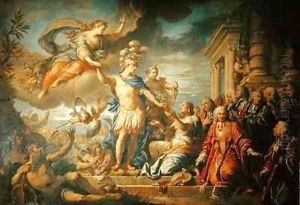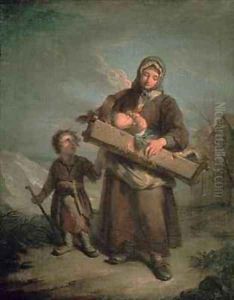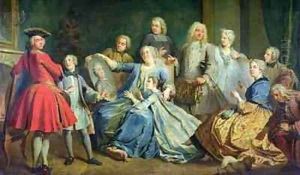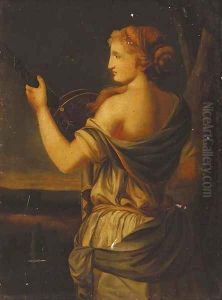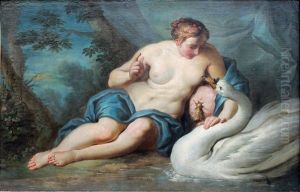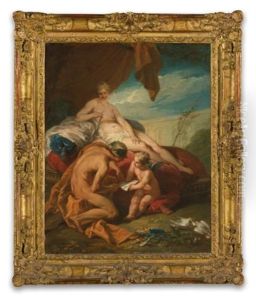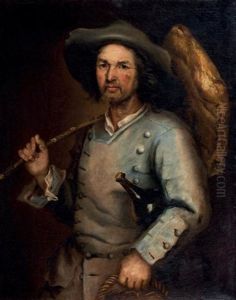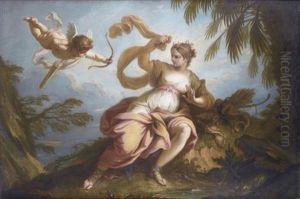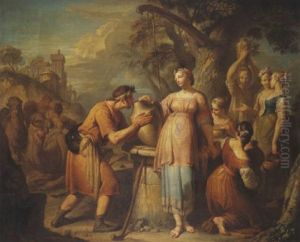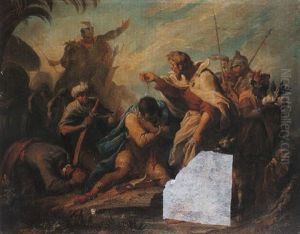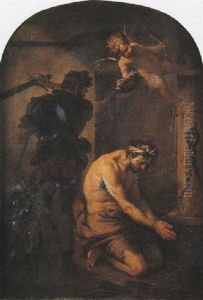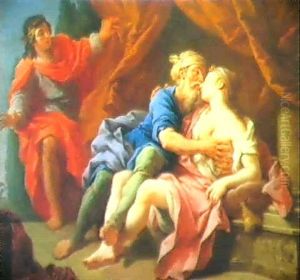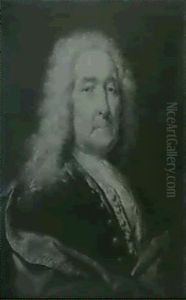Jacques (Le Romain) Dumont Paintings
Jacques Dumont, often known as Jacques Dumont le Romain due to his extended stay in Rome, was a French painter born in Paris in 1701. He belonged to the early 18th-century French school of painting and was noted for his classical style, which was heavily influenced by his time in Italy. Dumont's works are characterized by their clarity of composition and a certain rigor in the drawing, typical of the classical tendencies that prevailed in the French Academy at the time.
Dumont received his initial training from his father, Pierre Dumont, who was also a painter. Eager to expand his artistic skills and knowledge, Jacques Dumont traveled to Rome, which was a common practice among artists of that era. His experience in Italy earned him the nickname 'le Romain'. In Rome, Dumont was exposed to the works of the great masters of the Renaissance and Baroque periods, which had a lasting impact on his artistic approach.
After returning to France, Dumont gained recognition and was received into the Académie Royale de Peinture et de Sculpture in 1723. He became a full member in 1725, and his reception piece, a painting now lost, depicted the Death of Cato of Utica. Dumont was also known for his history paintings, portraits, and genre scenes. Throughout his career, he exhibited at the Salon, the official art exhibition of the Académie Royale, and earned the patronage of several important figures of his time.
Dumont's works reflect the academic standards of his era, which emphasized drawing, poise, and a restrained use of color. He was a professor at the Académie and influenced a generation of artists, including some who would eventually contribute to the development of Neoclassicism. Despite his adherence to the academic style, Dumont's work was not devoid of emotion, and he was capable of infusing a sense of drama into his historical scenes.
Jacques Dumont le Romain passed away in 1781. While he may not be as widely recognized today as some of his contemporaries, his work remains an important example of the French classical tradition during the 18th century. His contributions to French art, particularly through his teaching and adherence to academic standards, played a role in shaping the artistic landscape of his time.
